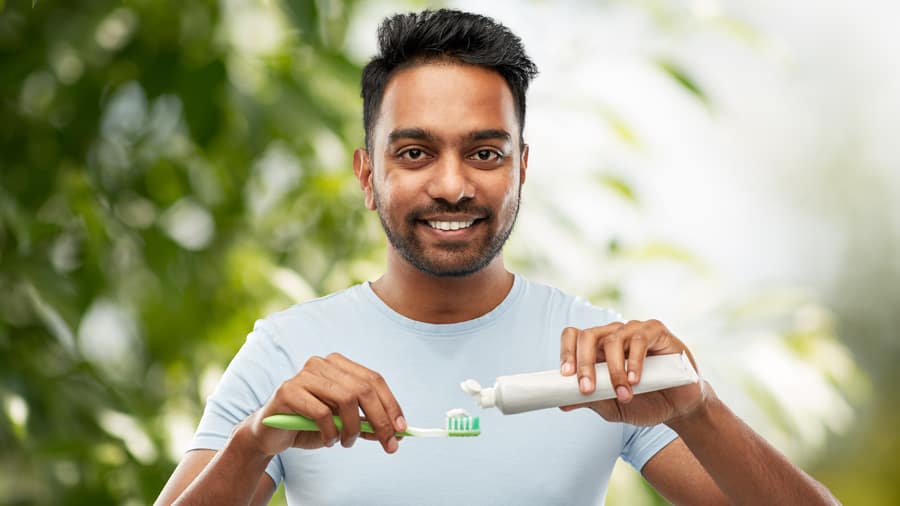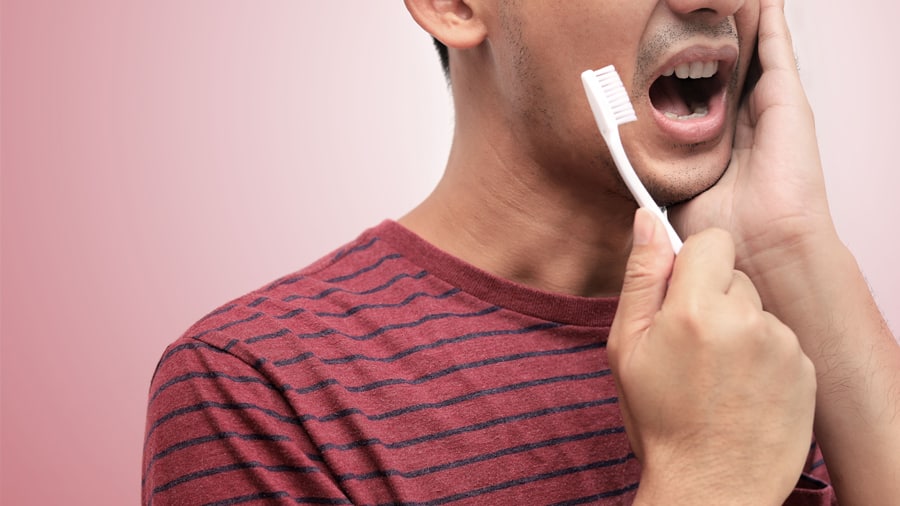Cavities 101
You may know that dental caries is the scientific term for cavities, and that cavities refer to areas of decay in teeth. According to the Indian Dental Association, cavity-causing organisms feed on sugar and turn it into acid, which attacks tooth enamel and causes tooth decay. This acid can destroy the outer tooth enamel. If allowed to progress, the acid can reach the layer underneath, known as dentin.
Cavities appear differently depending on their location and stage, and when you see your dentist, they will assess the severity of any decay in your teeth. A research study published in the Journal of Indian Society of Pedodontics and Preventive Dentistry notes that dental caries afflicts humans of all ages and in all regions of the world. It is a disease that may be never eradicated because of the complex interplay of social, behavioral, cultural, dietary and biological risk factors that are associated with its initiation and progression. For example, actions such as applying fluoride to the teeth can help to prevent cavities, whereas forgetting to brush your teeth twice a day can put you at risk for dental decay.
What Does Arrested Caries Mean?
According to a research study published in the IOSR Journal of Dental and Medical Sciences, arrested caries, are remineralised lesions that are no longer active, presenting highly mineralised surfaces, along with frequent and undesirable dark discoloration, due to pigment incorporation during the remineralisation process. They can be whitish, yellowish or darkened in colour but tend to be shiny or glossy, they are located farther away from the gingival margin, they feel hard and less rough. Arrested caries are dark discolored inactive caries, and require no restorative treatment unless they affect form, function, or esthetics. The hard, arrested lesions are black as they pick stain from exogenous sources Blackish discoloration or blackish staining of arrested caries, in particular, results from the presence of ferric sulfide, a byproduct from the reaction between iron present in saliva or gingival fluid and hydrogen sulfide formed by bacteria.
How Are These Cavities Treated?
The research study further explains that active caries can be converted into arrested caries by improved oral hygiene, fluoride tooth pastes and remineralizing agents. Thus to prevent this conversion of arrested caries into active ones, dentists should prescribe or apply remineralizing agents to the tooth surface.
If the area of decay appears dark and concerns you aesthetically, such as, if it appears in the front of the mouth, then you may consider cosmetic treatments like bleaching. If you have any inactive cavities, your dentist can recommend the best option for your situation.
Tips to Prevent Dental Decay
If you have experienced arrested tooth decay, it's important to revisit your oral hygiene routine to ensure your teeth stay healthy. National Oral Health Programme suggests that common dental diseases are easily preventable by following simple measures at home including tooth brushing and tongue cleaning, mouth rinsing, regular self examination of the mouth, avoiding smokeless/smoking tobacco and betel nut in all forms, breaking bad oral habits, consumption of healthy non-carcinogenic diet, visiting a dentist regularly, brushing twice a day, massaging the gums with finger after tooth brushing.
While arrested cavities often do not threaten your oral health or need any intervention from a dentist, it's still important to attend regular check-ups and maintain optimal oral hygiene to avoid future decay.
This article is intended to promote understanding of and knowledge about general oral health topics. It is not intended to be a substitute for professional advice, diagnosis or treatment. Always seek the advice of your dentist or other qualified healthcare provider with any questions you may have regarding a medical condition or treatment.
ORAL HEALTH QUIZ
What's behind your smile?
Take our Oral Health assessment to get the most from your oral care routine
ORAL HEALTH QUIZ
What's behind your smile?
Take our Oral Health assessment to get the most from your oral care routine









